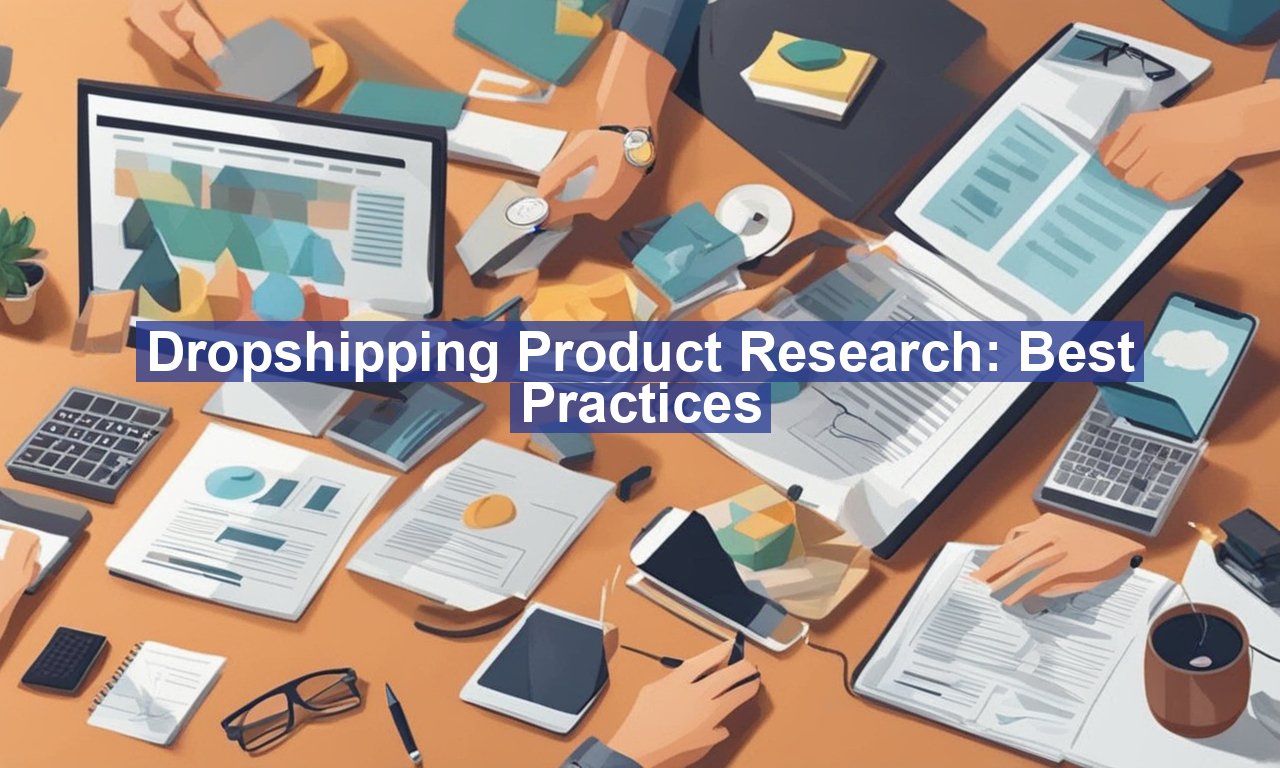As the digital realm continues to evolve, incorporating innovative and adaptive business models like dropshipping has become a game-changer for many entrepreneurs. But success in dropshipping is not solely reliant on exceptional marketing tactics or stellar web design. The heart of this business model is robust product research. Get this right, and you’re on the fast track to e-commerce success. Miss the mark, and you could be stuck with hope-filled, yet unsold inventory. In this article, we’re diving into the best practices for dropshipping product research, aiming to help you sift through the endless sea of products and find the gems that will maximize your profitability.
Why Is Product Research Critical for Dropshipping?
The dropshipping model thrives on its simplicity and low overheads. You don’t have to manage inventory, making the entry barrier low for budding entrepreneurs. However, the flipside is intense competition. That’s where meticulous product research becomes invaluable. Being able to identify trending products earlier than your competitors can give you a significant edge.
Steps for Effective Dropshipping Product Research
Here are the best practices for conducting effective dropshipping product research:
1. Understand Your Niche
The first step is to have a strong grasp of your chosen niche. Diving into a niche that aligns with your interests or expertise can offer a clearer perspective and better understanding of your target market. Knowing the quirks of your niche means you’re not just peddling products, but offering **solutions** to your customers’ problems.
2. Use Data-Driven Tools
To make informed decisions, leverage the power of data. Numerous tools exist to aid in product research. Tools like **Google Trends**, **SEMrush**, and **Ahrefs** can provide insights into search demand and competition levels for certain products. For example, using Google Trends will allow you to view the interest level in various products over time, helping you predict potential trends.
Google Trends | SEMrush | Ahrefs
3. Analyze Your Competitors
Check out what your competitors are offering. Identify the most popular products they have and analyze their marketing strategies. One way to do this is by visiting their websites and monitoring their social media presence to see which products they are currently pushing.
4. Specify Product Criteria
Define what criteria make a product ‘dropship-worthy’ such as:
–
–
–
–
Focusing on these criteria will help you filter out likely unsuccessful products.
5. Monitor Supplier Reputation
The supplier you choose can make or break your business. Establish relationships with reliable suppliers, ensuring they offer quality products and can fulfill orders promptly and consistently. Platforms like **Alibaba** or **AliExpress** provide ratings and reviews from which you can gauge a supplier’s reliability.
Finding Evergreen Products vs. Trending Items
Evergreen Products
These are products that have consistent demand over time, thereby minimizing risk. They are usually essential goods or items with lasting relevance. Think phone accessories, pet products, or fitness gear. The benefit here is a stable market presence.
Trending Items
On the flip side, trending products can skyrocket your business overnight if you hit the right note. These are often tied to seasonal or cultural trends. However, they can be volatile, hence the importance of timing and adaptability in your strategy.
Learn more about finding trending items
Utilizing Social Proof and Validation
Social proof is a powerful tool in your product research arsenal. Leverage platforms such as **Instagram** and **Pinterest** to discover which products are garnering attention. Check hashtags, user posts, and comments to gauge interest levels. User reviews and ratings can further validate the popularity and functionality of a product.
Final Thoughts
While the world of dropshipping presents countless opportunities, navigating it can be tricky without the right approach to product research. By niching down, using data-driven tools, keeping a keen eye on competition, setting precise product criteria, and establishing strong supplier relationships, you can build a successful dropshipping business. Remember, staying adaptable and vigilant about market trends will keep you a step ahead of the competition.
Success won’t come overnight, but with diligent research and strategic product choices, your dropshipping venture can flourish in the bustling digital storefronts worldwide.


